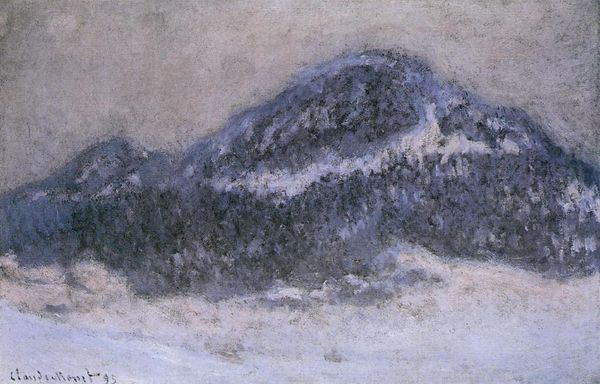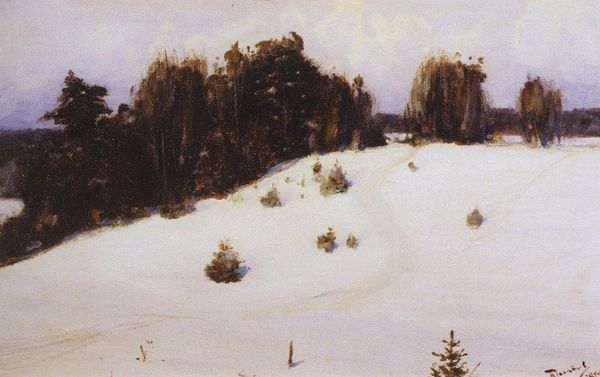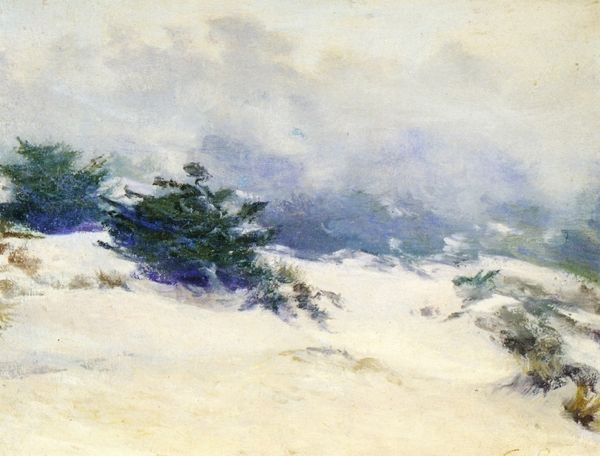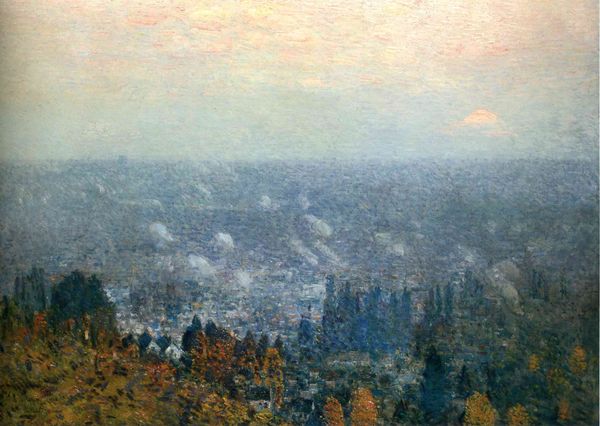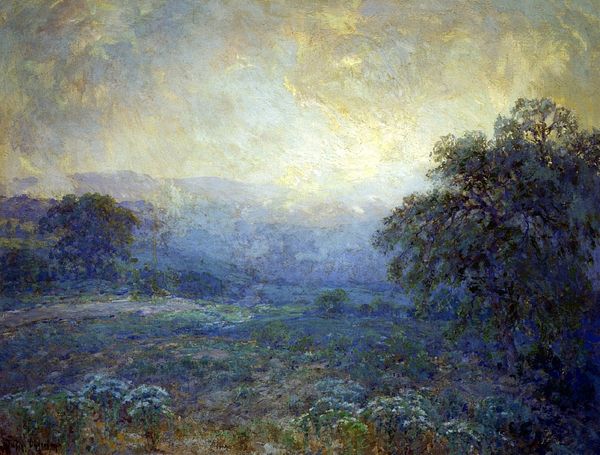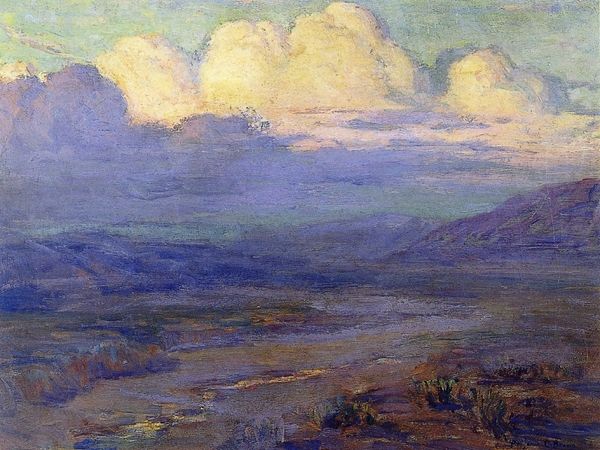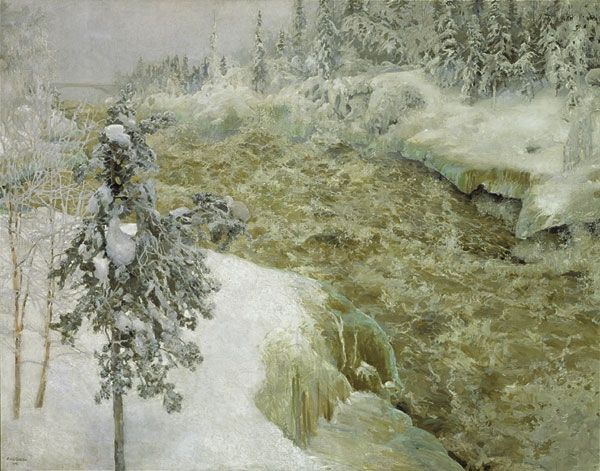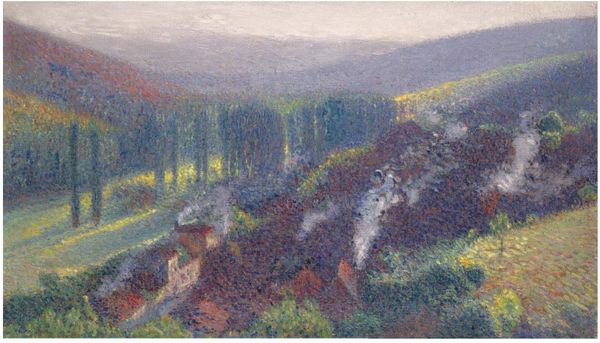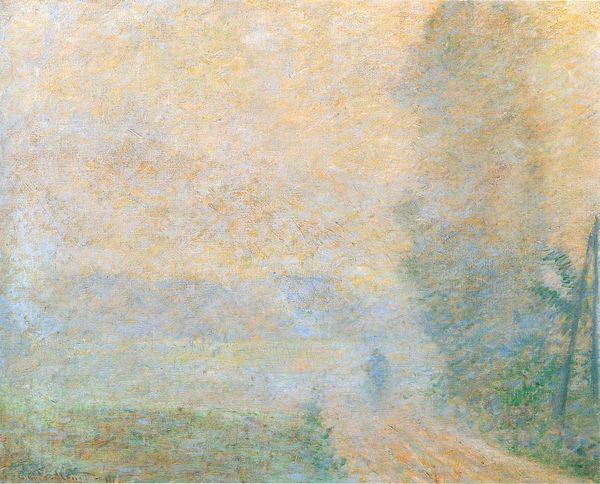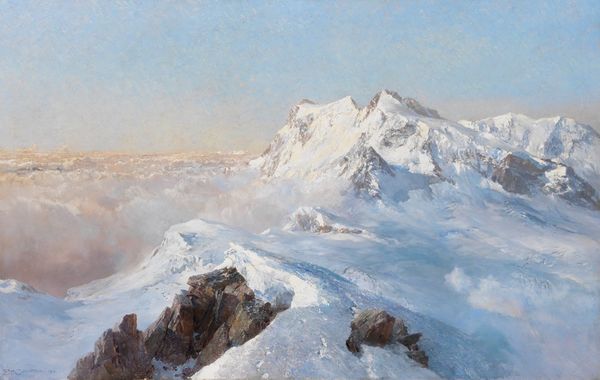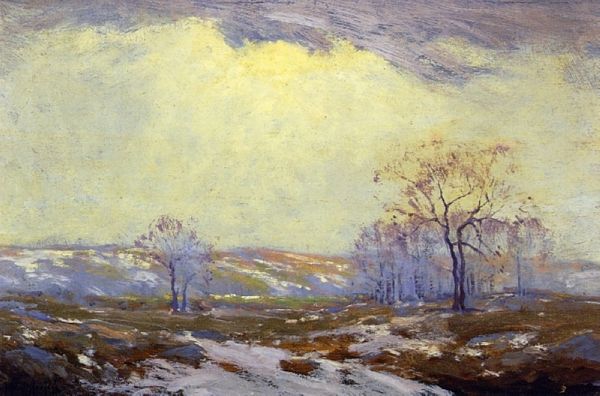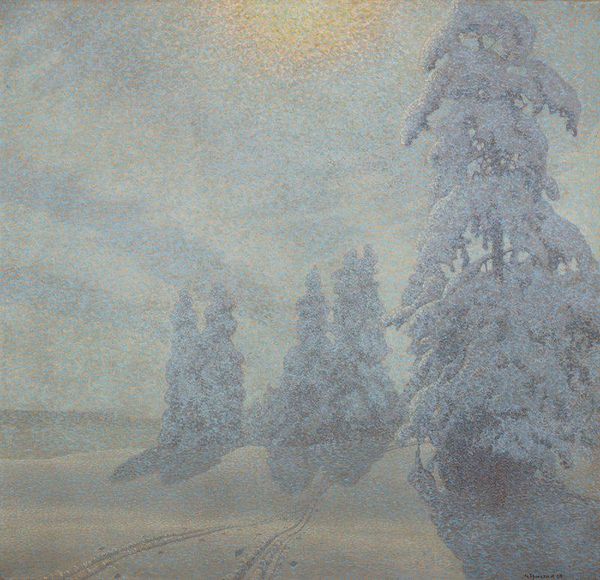
Copyright: Public domain
Editor: Here we have Caspar David Friedrich's "Morning Mist in the Mountains," an oil and tempera painting from 1808. I find it ethereal and somewhat melancholic; the limited palette really sets that tone. What do you make of it? Curator: Initially, I'm struck by the subtle tonal variations, particularly in the rendering of the mist. Note how the artist manipulates light and shadow, not for photorealistic depiction, but to create an ambiguous pictorial space. Observe the calculated structure in how Friedrich organizes the various landscape elements and creates meaning through those relationships. Does that speak to you? Editor: Absolutely, it does. It almost feels like the mountains are emerging from the fog, creating a sense of depth but also mystery. There’s a very clear foreground, middle ground, and background. Curator: Precisely! Consider how the foreground trees, rendered with sharper detail, contrast with the dissolving forms of the distant peak. It establishes a clear spatial hierarchy within the pictorial frame. Beyond representation, what structural or material qualities stand out? Editor: The texture seems very smooth, especially when compared to the Romantic landscapes that followed. Also, the limited color palette—mostly whites, blues, and grays—really draws attention to the form. It's almost minimalist, in a way. Curator: Precisely. The chromatic austerity underscores a conscious suppression of subjective affect. It compels us to analyze how these internal systems create a kind of structural harmony, don't you think? Editor: I hadn’t considered it in that light. Thanks, I'll have to look at it again and reflect on your suggestions. Curator: And I think I’ll focus a little more on texture as a constructive element in pictorial harmony. Thank you.
Comments
No comments
Be the first to comment and join the conversation on the ultimate creative platform.
